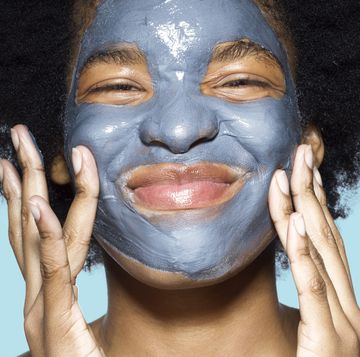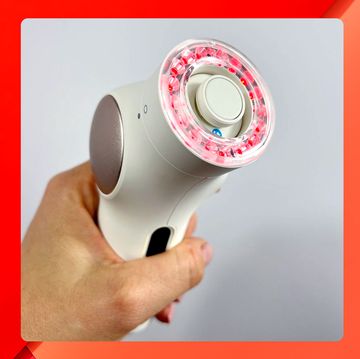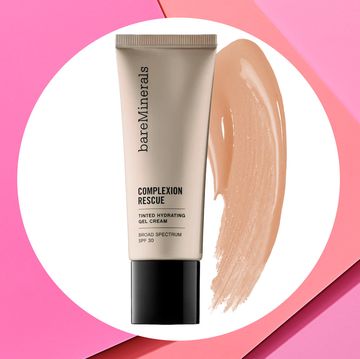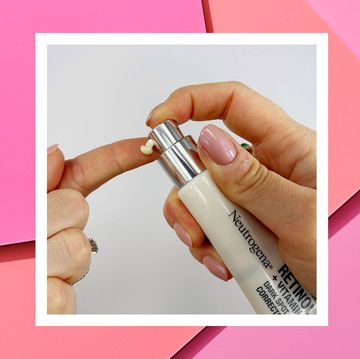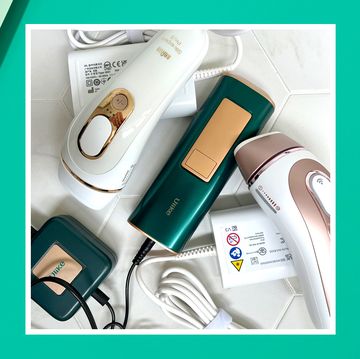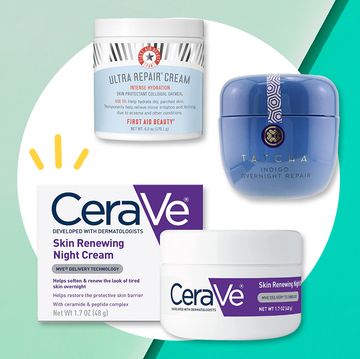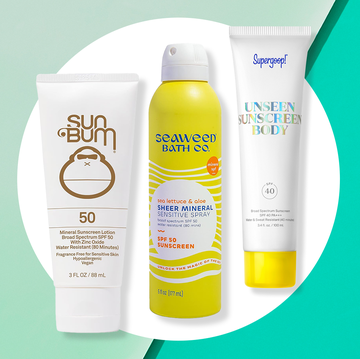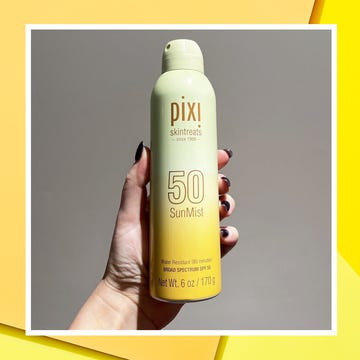Foundation seems simple enough. Apply your base, and move on. But there's a reason they call it foundation—it has the power to bring your entire makeup look together with a flawless, strong base. It may not be the most exciting step, but it deserves your attention. To give you the best-looking skin possible, we asked Kecia Littman, a Hawaii-based makeup artist, to share the foundation tricks she comes back to again and again.
Test Out Three Shades on Your Jawbone
Finding your perfect foundation shade can be a serious game of trial and error. Too light, too dark, too pink, too orange. The search can make you feel like Goldilocks until you find one that's just right. Littman recommends trying three foundations in different shades along your jawbone, which is a better color match to your face than the back of your hand. Pick the best match of the three, then try that shade, the one above it, and the one below it on your jawline. More likely than not, one will be next to invisible on your skin.
MORE: 4 Secrets to Finding the Right Foundation Color
Use Two Different Shades
Depending on how much time you spend in the sun, your face may actually be different shades. "Your forehead, where you get more sun, may be a different shade than different parts of your skin that don't get as much sun, like your jaw," says Littman. In that case, you may need to use two different colors to keep your skin looking natural—one darker for where the light hits you most, and one a shade lighter for the rest of your face.
Know Your Skin Type and Corresponding Foundation Formula
Your skin type and foundation formula go hand-in-hand, says Littman. To take the guesswork out of choosing a formula, take a look at your face wash. Using products for dry skin? Littman says your go-to is a liquid foundation with an emollient, moisturizing base like shea butter. For normal, you can experiment with your choices, but Littman thinks liquid looks most natural and beautiful on the skin. For oily and combination, try powder foundations or cream-to-powder formulations to keep oiliness at bay.
Use a Domed Brush
Not every area of our face needs the same amount of coverage. Everyone's problem areas are different and need to be treated as such. Littman loves using the Roque Cozzette Rounded Foundation Brush ($21, roquecozzette.com) because she finds it allows her to get the perfect level of coverage in every area of the face.
Try A Stippling Technique
Working with liquids or creams? Littman says to try applying it with a stippling technique—or in not-so-technical terms, applying foundation in light, bouncing motions with a brush made for stippling. "If I'm working with liquids and creams, I almost always stipple," says Littman. It allows for a flawless finish that looks like second skin. Try the Real Techniques Stippling Brush ($10, realtechniques.com).
Always Swipe Downward
Contrary to what skin-care experts may tell you, upward sweeping motions are not always best for your skin. When applying foundation, Littman says to always brush in downward strokes. "If you go upward on the face, it will fill in your pores and make them stand out," she says. This is a simple tip: If you're applying foundation in strokes, always stroke down.
MORE: 4 Stick Foundations That'll Make You Glowy and Gorgeous
Start in the Middle
"Typically, you get the most redness in your T-zone area," says Littman. "Which means that's where you need the highest coverage." By applying the majority of your foundation on your nose, the center of your forehead and chin, and on the apples of your cheeks—and working outward from there—you five the areas that really need it the most coverage.
Only Powder Your T-Zone
Getting the dreaded "cake face" is a foundation nightmare. Typically, you want your foundation to look like you're wearing nothing at all. Powder is a great way to set your foundation and keep your face looking matte, but too much of it can lead to visual overkill. Littman recommends powdering just along your T-zone, which is where you get most oily and your foundation is most likely to run. "Let your foundation breathe," says Littman.




